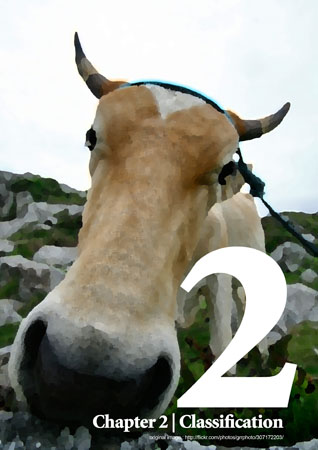The Anatomy and Physiology of Animals/Classification
From WikiEducator

original image by R'Eyes cc by
In this chapter you are introduced to the concept of classification. Scientists have made sense of the 1.5 million or so different kinds of living organisms on the planet by describing, naming and placing them in different groups. This process is called classification. As vet nurses you are mainly concerned with the Animal Kingdom but don’t forget that animals rely on the Plant Kingdom to survive. Also many diseases that affect animals come from the other Kingdoms containing the fungi, bacteria and single celled animals.
Objectives
After completing this section, you should know:
- how to write the scientific name of animals correctly
- know that animals belong to the Animal kingdom and that this is divided into phyla, classes, orders, families and genera
- know the definition of a species
- know the phylum and class of the more common animals dealt with in this course
Summary
- The scientific name of an animal has two parts, the genus and the species, and must be written in italics or underlined.
- Animals are divided into vertebrates and invertebrates.
- The classification system has groupings called phyla, classes, orders, families, genera and species.
- Domestic animals are all in the class mammalia.
- Members within a species can mate and produce fertile offspring.
- Sub-groups within a species include breeds, races and varieties.
There are presentations for you to look at on this topic. You will have to use your Otago Polytechnic student login to access these.